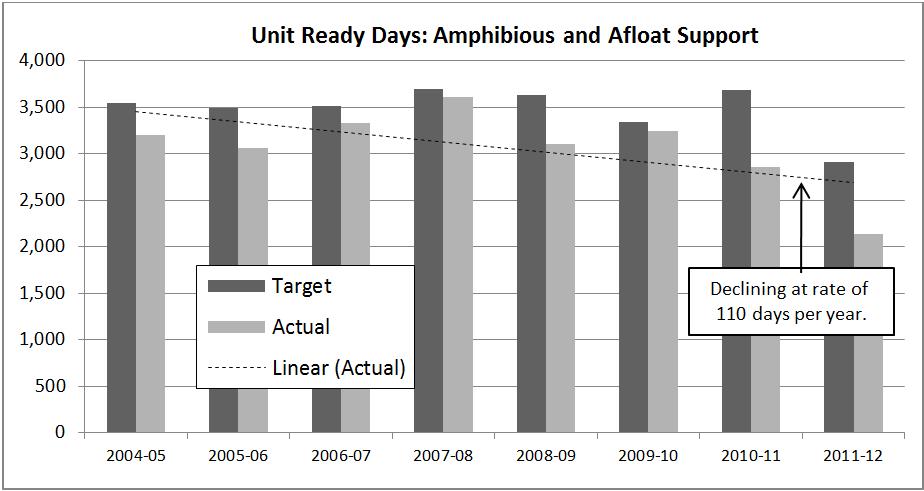All at sea
Posted By Mark Thomson on May 8, 2013 @ 06:00
There was a time back in the 1990s when the Defence Annual Report listed not just the availability of the Navy’s various platforms for deployment, but also the actual number of days at sea for each of its vessel types over the year. We were told both what each fleet could do and what they did do.
By the turn of the century, the Navy had ceased to report sea days and we were left with only the (more flattering) number of days vessels of each type were available for tasking. Nonetheless, reporting during this period was sufficient to expose problems with the various platforms due to upgrades, maintenance issues and delayed replacements.
Then, in 2009–10, Navy ceased reporting at the vessel type level and aggregated together the availability of its key vessels into three categories:
Major Combatants: Anzac frigates, FFG frigates and submarines.
Minor Combatants: Patrol boats, auxiliary minehunters and coastal minehunters.
Amphibious and Afloat Support: oil tanker, replenishment ship, landing ship dock, heavy landing ship and heavy landing craft.
The reason for this much reduced transparency is supposedly security related. I’m doubtful: if we were able to report the availability and sea days of our submarines when they were undertaking risky intelligence gathering missions [1], why can’t we know their availability today? Similarly, why is the availability of our frigates a national secret when the RAAF freely reports the number of flying hours achieved by its frontline fighters? If security really is the reason, as opposed to just wanting to avoid scrutiny, Andrew Davies’ revelations about Collins availability [2] show that it’s not being implemented with much success.
But even using aggregate data the results aren’t encouraging, as the following three graphs show (click to enlarge). The targets for each category are as set in the budget for that year, and the actual figures are as reported in the Annual Report. While the best-fit line for the minor war vessels is of questionable meaning, the results for the other two categories are pretty clear about the trend.
Mark Thomson is senior analyst for defence economics at ASPI.
Article printed from The Strategist: https://aspistrategist.ru
URL to article: /all-at-sea/
URLs in this post:
[1] undertaking risky intelligence gathering missions: http://www.theage.com.au/news/national/secret-spy-missions-forced-to-the-surface/2006/09/07/1157222265317.html
[2] Andrew Davies’ revelations about Collins availability: https://aspistrategist.ru/graph-of-the-week-collins-unavailability-2/
[3] Image: https://aspistrategist.ru/wp-content/uploads/2013/05/Mark-Thomson-unit-ready-days-minor-combatants-1.jpeg
[4] Image: https://aspistrategist.ru/wp-content/uploads/2013/05/Mark-Thomson-unit-ready-days-major-combatants-21.jpeg
[5] Image: https://aspistrategist.ru/wp-content/uploads/2013/05/unit-ready-days-amphib-and-afloat-support-3-mark-thomson.jpeg
Click here to print.


